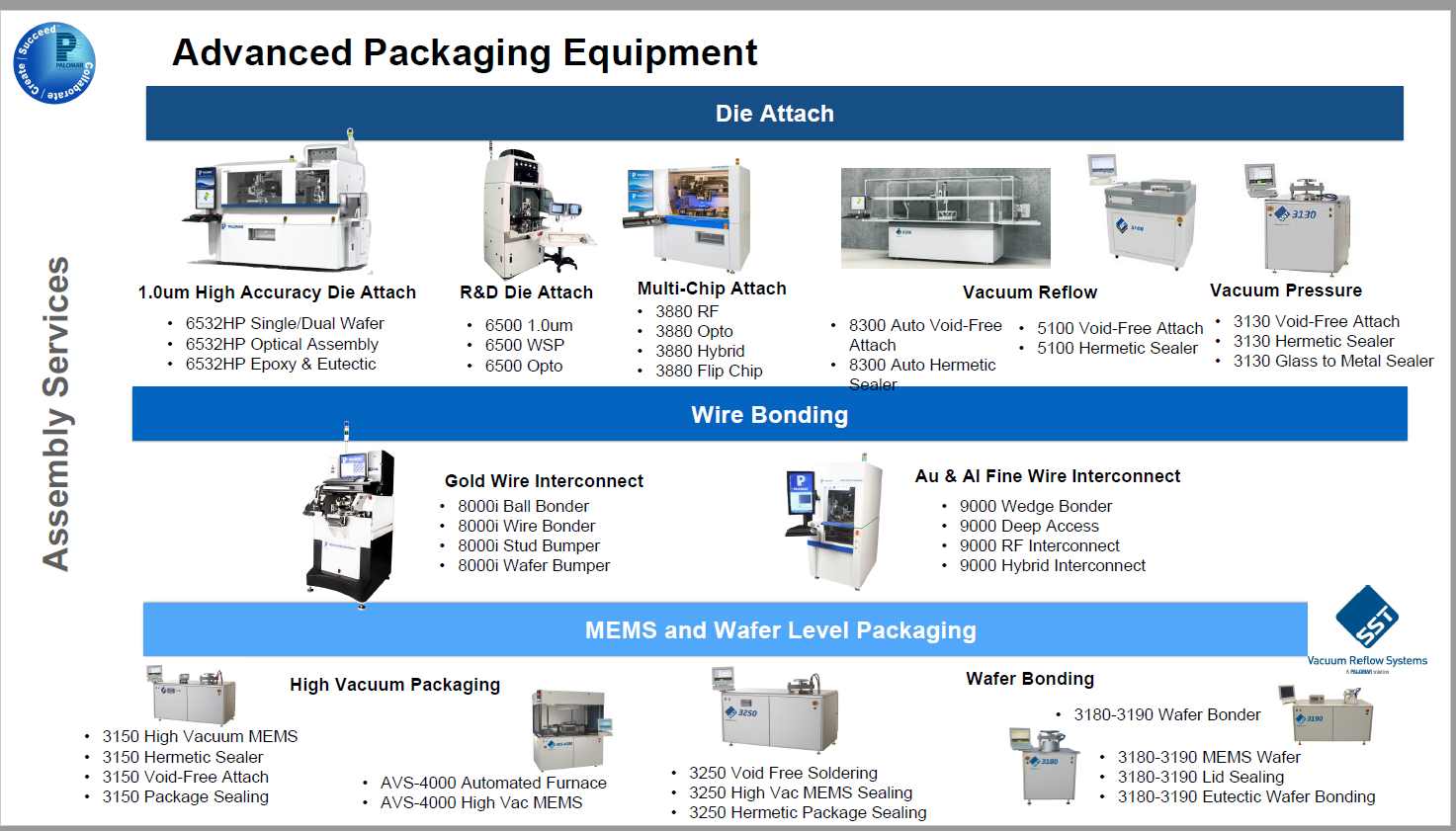It is not uncommon to see several different kinds of back-end assembly machines operating within close proximity to one another on a packaging assembly cleanroom anywhere in the world. The reasons for this stem from the fundamental need to use the best possible tools for the highest yield and reliability possible.
Since Palomar Technologies acquired SST International (now SST Vacuum Reflow Systems) in 2015, we have been working to fuse together these advanced packaging technologies into a single solution for our customers. As a result, Palomar’s Innovation Centers in California, Singapore, and the UK operate in a similar format as any typical packaging assembly clean room. Because Palomar offers high precision die attach, Au/Au ball-wedge bonding, en-masse void-free die attach and hermetic sealing, along with additional supporting equipment including pull/shear testing, thermal curing oven, plasma cleaning, CSAM, X-ray and 3-D measurement in one place, we have the ability to use these combined technologies as part of our normal packaging assembly process.
In this blog, we will look at one example of semiconductor packaging that utilizes a range of technologies to complete the entire packaging assembly process.
Case No. 1: High-reliability LED packaging
In a relatively straightforward LED assembly packaging process, the process is as follows:
- Step 1 starts by tacking an LED to a substrate using an automated die bonder (Palomar 3880).
- Once the tacking is complete, the package is moved to a vacuum reflow oven (SST 5100) where the LED die is attached. The resulting die attach will be perfectly (and truly) void-free.
TIP: The vacuum reflow oven was introduced to this process because the LED tended to “swim” around when attempting this same step with the die bonder. While it is possible that the die bonder could have managed to operate effectively with the swimming, the reliability and yield of the device certainly would have suffered later, not to mention potentially introducing problems downstream with wire bonding. With the heat generated by the high-reliability LEDs, a true void-free attach is the best solution to go with – if you have the tool, use it.
- The package is removed from the vacuum reflow oven and put back on to the automated die bonder. Here the additional components will be attached in-situ (thermistor, resistors, diodes, etc.).
- The now completed die attach assembly is sent into curing oven at the specified time and temperature required by the materials.
- Once out of the curing oven, a plasma clean of the device is performed.
- The now die attached and plasma cleaned package is presented to the automated ball-wire bonder (Palomar 8000i). Wire interconnects are quickly bonded from the LED to the substrate.
- The final steps are testing, burn in and characterization.
Other applications that can be a good match for this combined technology include pump lasers, IR microbolometers, and aerospace complex hybrids as well. We share this information to encourage you to consider all the options that are available when designing your packaging process.
 For more information about our Palomar Innovation Centers, contact your Palomar or SST sales representative.
For more information about our Palomar Innovation Centers, contact your Palomar or SST sales representative.
| Download the Palomar 3880 Die Bonder Data Sheet: | Download the Palomar 8000i Wire Bonder Data Sheet: | Download the SST 5100 Vacuum Reflow Oven Data Sheet: |
 |
 |
 |
----
Rich Hueners
Vice President, Global Sales & Marketing
Managing Director, Palomar Technologies (SE Asia) Pte Ltd